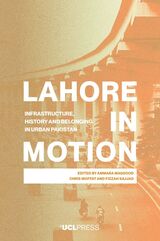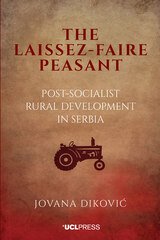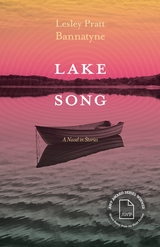
An expansive narrative of World War I’s Eastern Front challenges longstanding analytical frameworks, offering a novel and far-reaching explanation for the emergence of new nation-states from the wreckage of Europe’s land empires.
In August 1914, Germany, Austria, and Russia sent millions of soldiers hurtling toward one another across the volatile borderlands of Central Europe. The early battles produced appalling casualties but no decisive triumphs; the Great War’s Eastern Front would remain a cauldron of death and destruction for years. And unlike in western Europe, the killing would not end in 1918. With the collapse of the three empires, the front dissolved into a series of overlapping civil, international, and revolutionary wars that would continue for several years more.
The connections among prewar, wartime, and postwar events in Central Europe are so strong, argues Jesse Kauffman, that we should analyze the conflict there in new chronological terms: starting with the Russian Revolution in1905 and continuing until at least the 1921 Treaty of Riga. In particular, The Blood-Dimmed Tide shows that the emergence of sovereign nation-states in postwar Central Europe was neither the inevitable triumph of long-thwarted national ambitions nor a wholly contingent, unforeseeable outcome of the war. Rather, modern states emerged from a conscious decision taken by all the belligerents to encourage the nationalist aspirations of imperial subjects in their enemies’ territories.
Indeed, the repercussions of Central Europe’s long Great War can be felt all the way to today’s conflict in Ukraine. It might be time to retire Eric Hobsbawm’s famous notion of the “short twentieth century”—1914 to 1991—and to consider instead that the twentieth century has not yet drawn to a close.

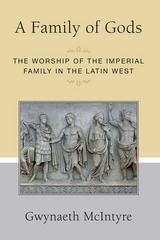
Roman politics and religion were inherently linked as the Romans attempted to explain the world and their place within it. As Roman territory expanded and power became consolidated into the hands of one man, people throughout the empire sought to define their relationship with the emperor by granting honors to him. This collection of practices has been labeled “emperor worship” or “ruler cult,” but this tells only half the story: imperial family members also became an important part of this construction of power and almost half of the individuals deified in Rome were wives, sisters, children, and other family members of the emperor.
In A Family of Gods, Gwynaeth McIntyre expands current “ruler cult” discussions by including other deified individuals, and by looking at how communities in the period 44 BCE to 337 CE sought to connect themselves with the imperial power structure through establishing priesthoods and cult practices. This work focuses on the priests dedicated to the worship of the imperial family in order to contextualize their role in how imperial power was perceived in the provincial communities and the ways in which communities chose to employ religious practices. Special emphasis is given to the provinces in Gaul, Spain, and North Africa.
This book draws on epigraphic evidence but incorporates literary, numismatic, and archaeological evidence where applicable. It will be of interest to scholars of Roman imperial cult as well as Roman imperialism, and religious and political history.

Part I charts the historical and cultural currents that shaped Gogol's reputation, devoting particular attention to the models of authorship Gogol himself devised in response to his changing audience and developing authorial mission. Part II takes a panoramic view of the social milieu in which Gogol's status evolved. Finally, Part III examines the place of the classics in Soviet culture, with a focus on Gogol's role in the cultural revolution and his peculiar relationship with state power under Stalinism.
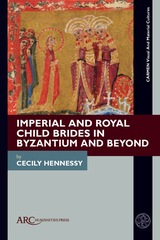
This book focuses on the Byzantine court in Constantinople and the young females (aged fourteen or younger) who married into the royal and imperial households of Byzantium and medieval Europe to eventually become queens or empresses. Some married within their own culture, while many travelled hundreds of miles from their homes to encounter new customs, languages, and sometimes religion.
Covering the period from the tenth to the fifteenth centuries, this survey addresses a range of neglected areas of study: the crucial importance of children in society in general; the key responsibilities laid on girls and the vital roles of female children in building alliances; and the promotion of political and religious agendas. It addresses both history and art, with evidence drawn from historical sources, religious foundations, manuscripts, wall paintings, ivories, and metalwork.
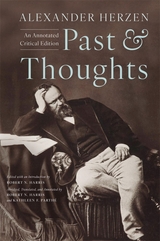
An annotated translation of Alexander Herzen’s monumental memoir Past and Thoughts—the first new English-language edition in a century—captures the tumultuous life and penetrating cultural and political insights of the writer widely regarded as the founder of Russian socialism.
Isaiah Berlin called Alexander Herzen’s magnum opus, Past and Thoughts, “a literary masterpiece worthy to be placed by the side of the novels of . . . Tolstoy, Turgenev, Dostoevsky.” It was the most influential memoir published in nineteenth-century Russia, and its impact extended far beyond the tsarist era and the empire’s borders, inspiring generations of thinkers, leaders, and dissidents struggling against authoritarian regimes. The first English-language translation in a century, thoroughly annotated with a new introduction, this volume shows why Past and Thoughts is considered a great classic.
Against a dramatic backdrop of war, revolution, and exile, Herzen tells a stirring story of political agitation, marital scandal, betrayal, and despair. Past and Thoughts begins with Napoleon’s invasion of Moscow during Herzen’s infancy, then follows the author’s central role in Russia’s emerging intelligentsia, his imprisonment and exile in the frozen north, his adventures across a mid-century Europe undergoing the turbulence of revolution and unification, and his founding of the first uncensored Russian-language press. We see the Paris revolts of 1848 and the flamboyant swashbucklers of Italy’s Risorgimento through Herzen’s sharp eyes, alongside his bold journalism, which reached both the tsar’s prisoners and the Winter Palace.
This edition restores a key section on the tragic denouement of Herzen’s marriage—omitted from previous abridged versions—and includes notes offering critical insight into Herzen’s historical sketches, travelogues, satire, poetry, philosophical excursions, and polemics. Tolstoy remarked that “Herzen awaits his readers in the future.” A piercing investigation of the human spirit and its enemies, Past and Thoughts is indeed a work for our time.

Focusing on geographical practices—such as exploring, observing, describing, and mapping—Reconnoitring Russia explains how Russia’s rulers and public came to understand the expanse of their territory. It adopts a broad chronological framework and compares the Russian experience to the concurrent realities of other European countries between 1613, the emergence of the Romanov dynasty, and 1825, the conclusion of Alexander I’s reign.



READERS
Browse our collection.
PUBLISHERS
See BiblioVault's publisher services.
STUDENT SERVICES
Files for college accessibility offices.
UChicago Accessibility Resources
home | accessibility | search | about | contact us
BiblioVault ® 2001 - 2025
The University of Chicago Press


